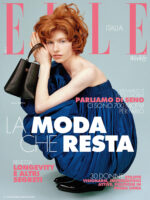When buying an engagement ring, wanting the best for your partner is natural. However, you don’t have to break the bank to show love. With these 7 tips for buying an engagement ring on a budget, you can save money on your purchase without sacrificing quality or style.
Determine your budget
One of the most important things to consider when buying your ring on a budget is determining how much you can afford to spend. There’s no hard and fast rule for how much you should spend on your ring, but a good guideline is to spend around 2-3 months’ salary. However, it’s important to remember that everyone’s financial situation is different, and you should only spend what you’re comfortable with.
When determining your budget, consider other expenses you may have in the near future, such as a wedding, honeymoon, or home purchase. It’s also a good idea to consider financing options, such as applying for a store credit card or taking out a personal loan, if you need to spread the cost out over time.
Understanding 4 Cs
The 4 Cs of diamonds – cut, color, clarity, and carat weight – are the standard used to assess the quality and value of a diamond. By understanding these factors, you can make a smart purchase that will give you the most value for your money.
Cut refers to how well the diamond has been cut and shaped, which impacts how it reflects light. A well-cut diamond will reflect more light and sparkle, while a poorly cut diamond will appear duller. Color refers to how much color is present in a diamond, with less color being more desirable.
Clarity refers to any internal or external flaws in the diamond, with fewer more desirable flaws. Finally, carat weight refers to the weight of the diamond, with larger diamonds generally being more expensive.
Don’t Focus on high-color grade
When it comes to color, it’s easy to get caught up in wanting a diamond with a high color grade. However, a diamond with a slightly lower color grade can still appear white or colorless to the naked eye, especially when set in a white gold or platinum band. For example, a diamond with a color grade of G or H will often look just as good as a diamond with a D or E color grade but cost significantly less.
By choosing a diamond with a lower color grade, you can save money without sacrificing the ring’s overall appearance. Remember that the diamond’s cut and clarity can also impact its appearance, so it’s important to find a balance between all the factors when choosing a diamond.

You maybe interest to read:
From garden to great outdoors: The Dior Men and Mystery Ranch partnership
Louis Vuitton appoints BTS member J-Hope as new brand ambassador
Metamorphosis: The rise of Reece Yeboah & COS collaboration
Buy slightly smaller diamonds below benchmark weight
Diamond prices can jump significantly at certain carat weights, which are known as benchmark weights. For example, a 1.00-carat diamond may cost significantly more than a 0.90-carat diamond, even if the two diamonds look almost identical in size. By choosing a diamond just below a benchmark weight, you can save money without sacrificing much in terms of appearance.
The key is to find a diamond that looks just as good as a larger one but costs less. You can also consider other factors, such as the diamond’s cut and clarity, to ensure you’re getting the best value for your money.
Prefer lab grown instead of mined diamonds
Lab-grown diamonds are a great option to save money without sacrificing quality or ethics. These diamonds are made in a lab using advanced technology replicating the natural diamond growing process. They have the same chemical and physical properties as natural diamonds, but they cost significantly less.
In addition to being able to save money on your purchase, lab-grown diamonds are also more ethical and sustainable than mined diamonds. They don’t require the environmental destruction and human rights abuses associated with mining, making them a great choice for socially conscious shoppers.

Pick the right diamond-setting ring
The setting of your ring can significantly impact its appearance and price. There are many different settings to choose from, each with its own unique style and cost. Some popular options include solitaire, halo, pavé, and channel settings.
When choosing a setting, consider the size and shape of the diamond, as well as your style preferences. A simple solitaire setting can be a great option for those wanting a classic, timeless look, while a halo setting can add sparkle and visual interest to the ring.
It’s also important to consider the metal used in the setting. While platinum is a popular option for engagement rings, it can be significantly more expensive than other metals, such as 14k or 18k gold. However, you can save money without sacrificing style or quality by choosing a gold setting.
Choose 14k or 18k gold
When it comes to choosing a metal for your engagement ring, gold is a popular and timeless option, however, there are different types of gold to choose from, including 14k and 18k.
14k gold contains 58.3% pure gold and is more durable than 18k gold, which contains 75% pure gold, while 18k gold is softer and may scratch or wear more easily, it has a richer, warmer color than 14k gold.
Ultimately, the choice between 14k and 18k gold comes from personal preference and budget. If you’re looking for a more durable and affordable option, 14k gold may be the way to go. However, if you’re willing to spend a bit more for a richer color and slightly softer metal, 18k gold may be the better choice.
When it comes to buying your ring on a budget, there are many ways to save money without sacrificing quality or style. By determining your budget, understanding the 4 Cs of diamonds, choosing a slightly smaller diamond below benchmark weight, opting for lab-grown diamonds, selecting the right setting, and choosing 14k or 18k gold instead of platinum, you can find the perfect ring to symbolize your love without breaking the bank.
Remember, the most important thing is the sentiment behind the ring, not the price tag.















